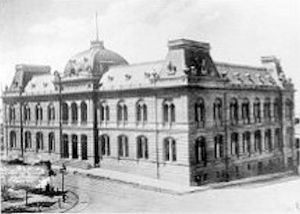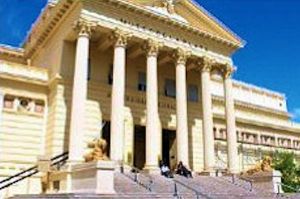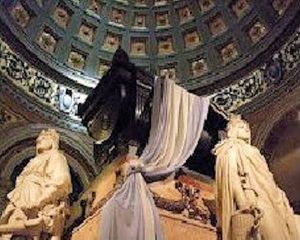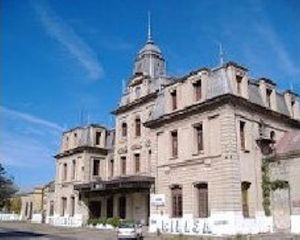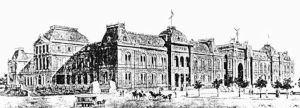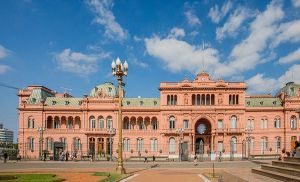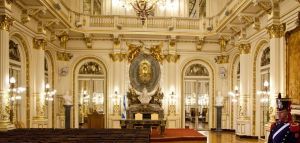Architect, planner
He was born in Linköping (Sweden), on 24 December 1841.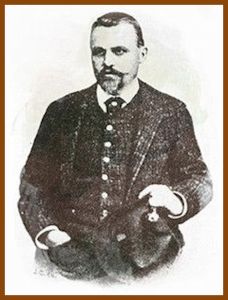 In 1863 he enrolled at the Royal Academy of Fine Arts in Stockholm, specialising in Architecture. After a study trip to Germany and France in 1866, in June 1869, as soon as he graduated, he decided, together with his fellow student Carl Kihlberg, to emigrate to Argentina. In those years Argentina was experiencing a severe economic depression caused by some years of bad harvests and the unfavourable economic situation also indirectly affected the construction sector.
In 1863 he enrolled at the Royal Academy of Fine Arts in Stockholm, specialising in Architecture. After a study trip to Germany and France in 1866, in June 1869, as soon as he graduated, he decided, together with his fellow student Carl Kihlberg, to emigrate to Argentina. In those years Argentina was experiencing a severe economic depression caused by some years of bad harvests and the unfavourable economic situation also indirectly affected the construction sector.
Progressively the two friends and colleagues began to find jobs with the help of some Swedish engineers who had moved to that country in search of fortune.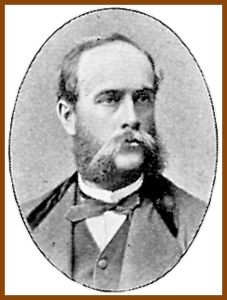 It was at that time that Åberg and Kihlberg participated in their first public competition for the new Buenos Aires penitentiary, but their architectural proposal was judged excessively benevolent towards the inmates. From that moment on they began to do various projects together.
It was at that time that Åberg and Kihlberg participated in their first public competition for the new Buenos Aires penitentiary, but their architectural proposal was judged excessively benevolent towards the inmates. From that moment on they began to do various projects together.
In 1871 they also won important awards at the National Exhibition of Argentina in the city of Córdoba.
Between 1871 and 1873 professional assignments, especially in the public sector, increased considerably, making them known and appreciated.
Their last work together was the "Normal School of Women of Buenos Aires", in December 1874. However, the partnership between the two colleagues was to be broken off and Kihlberg, in May 1875, decided to return home.
From that moment on, Åberg undertook an individual and intense professional career which led him to be merged with the Office of Engineers, thus reaching the peak of recognition when he was appointed First and Only National Architect who had Argentina.
His work as a designer was carried out mainly in the field of state architecture, including many of the most representative monumental buildings from the period 1870-1890.
Some of his works are shown below:
Among his many monumental works: the "Casa Rosada" in Buenos Aires.
But his far-sighted vision, also aimed at personal economic interests, led him to found a private real estate company which he called "L'Edificadora" with which, in parallel with his professional activity in the public sector, he designed, built and marketed several private houses and commercial buildings.
The frenetic pace of work, however, tired him and exhausted him, so in July 1886 he decided to return to Europe, leaving his former assistant, architect Carl Heynemann, in his place in the Engineering Department. Not before he had liquidated his countless assets with the exception of the majority stake in "L' Edificadora", which he had transformed on July 6, 1885, into a Limited Liability Company.
A millionaire at the age of 45, he first settled in Paris where he studied painting and watercolour: his other great passion. On 4 May 1888 he married Olga Henrietta Evelina Synnerberg, Finnish (born in Helsinki on 17/8/1848), with whom he had met in Buenos Aires.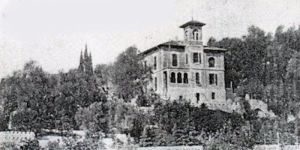 The couple settled in San Remo where Åberg planned what would be his final residence by building a spectacular villa, in the middle of a lush green area, to which he gave the name "Villa Åberg".
The couple settled in San Remo where Åberg planned what would be his final residence by building a spectacular villa, in the middle of a lush green area, to which he gave the name "Villa Åberg".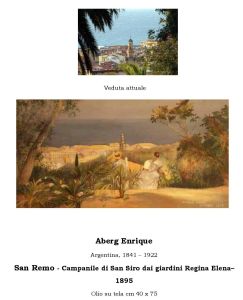 Since then he devoted almost all his time to painting. It seems that you could often meet him on the terrace of the Regina Elena Gardens, painting the bell towers of Sanremo (year 1895).
Since then he devoted almost all his time to painting. It seems that you could often meet him on the terrace of the Regina Elena Gardens, painting the bell towers of Sanremo (year 1895).
He kept, however, a vivid memory of Buenos Aires, a city to which he returned on several occasions. His nostalgia led him to design a stately home, which he planned to build in that capital.
His projects were never completed due to the serious crisis of the 1990s.
His thoughts did not neglect his hometown either, so he designed a palace and an Art Museum. In his will a foundation was established to build and maintain the Linko- Museum Art, which he had designed. When his wish was finally realized in 1939, it was materialized according to another architectural project.
Åberg's legacy was so generous that his foundation is still active with the immense legacies of his legacy.
Of the period in which Åberg lived in Europe, only two other projects are known (with the exception of those mentioned above of his Villa which was built in San Remo and the Villa he planned to build in Buenos Aires): both are after 1900.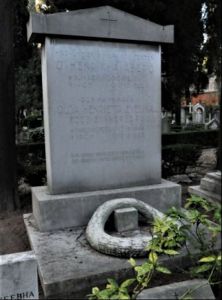 One is the project of a Casino-Kursaal in San Remo (1901) , and the second is the Art Museum in his hometown. Neither was ever built.
One is the project of a Casino-Kursaal in San Remo (1901) , and the second is the Art Museum in his hometown. Neither was ever built.
Åberg died on 17th September 1922 and is now buried in Rome. Alongside his wife who died a year later at 74 years of age (12/6/1923)
(research Alberto Ammirati and Umberto Ferrario - photo Wikipedia)





